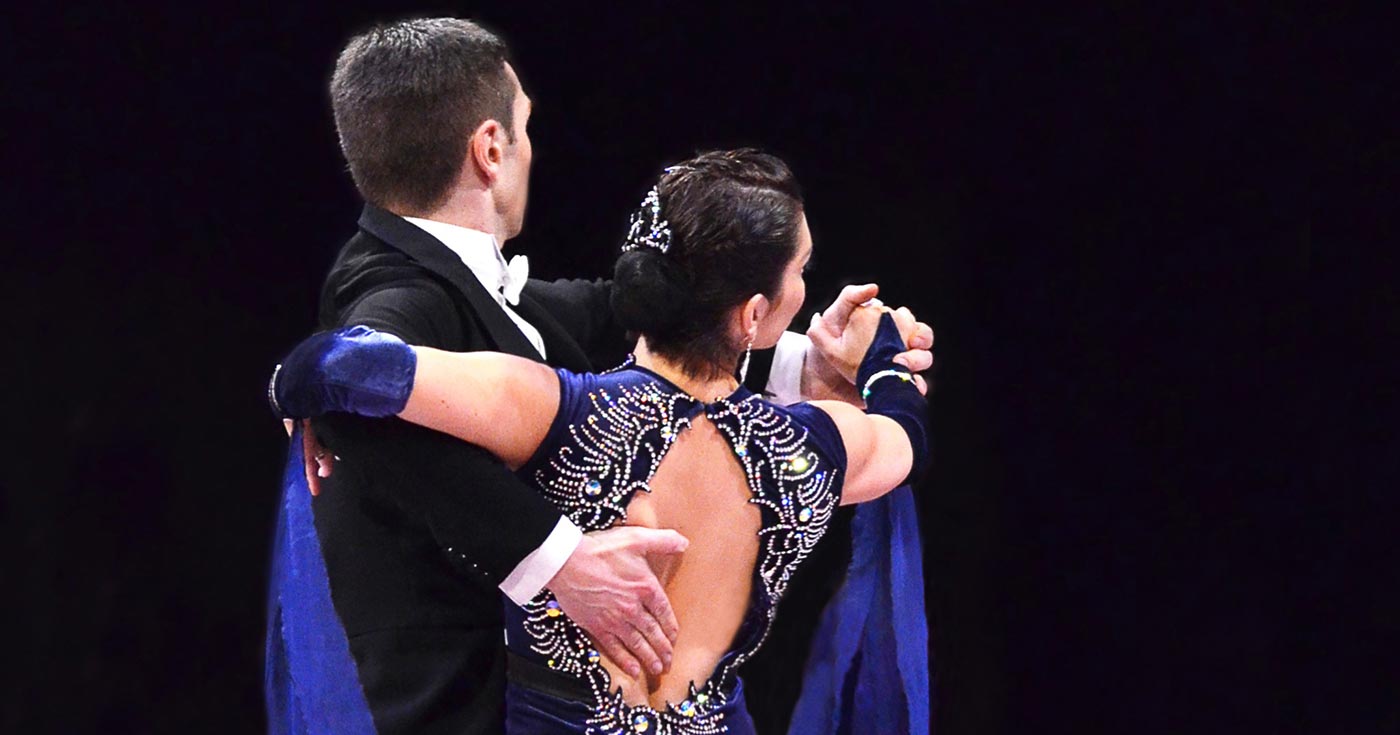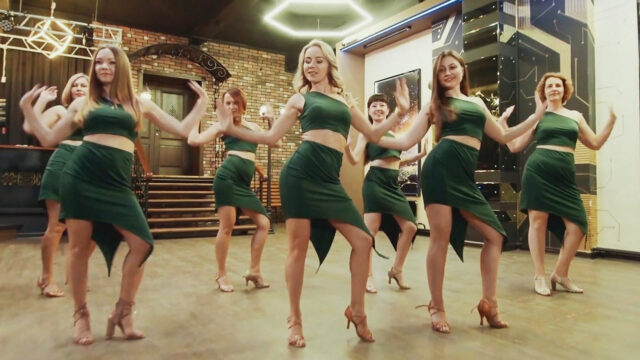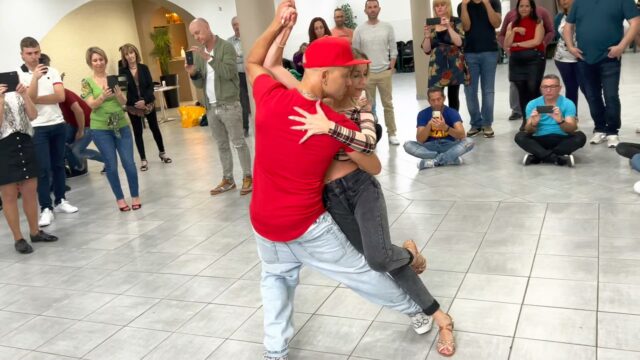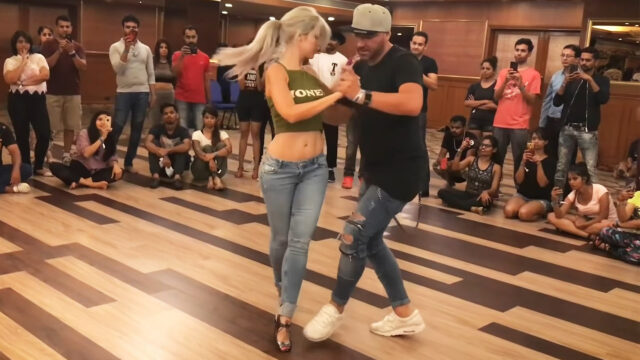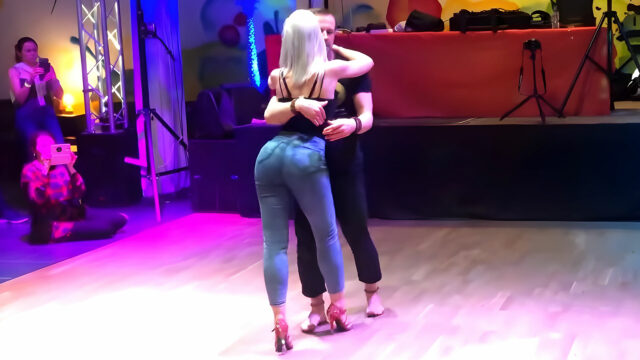Ballroom dancing typically refers to a set of traditional partner dances that are performed in ballroom dancing competitions and social dance events. The most common ballroom dances include: Waltz, Tango, Foxtrot, Quickstep, Cha Cha, Rumba, Samba and Jive. These dances have a standardized technique and are performed in a ballroom setting with a partner, making them different from other forms of dance like hip hop or contemporary dance.
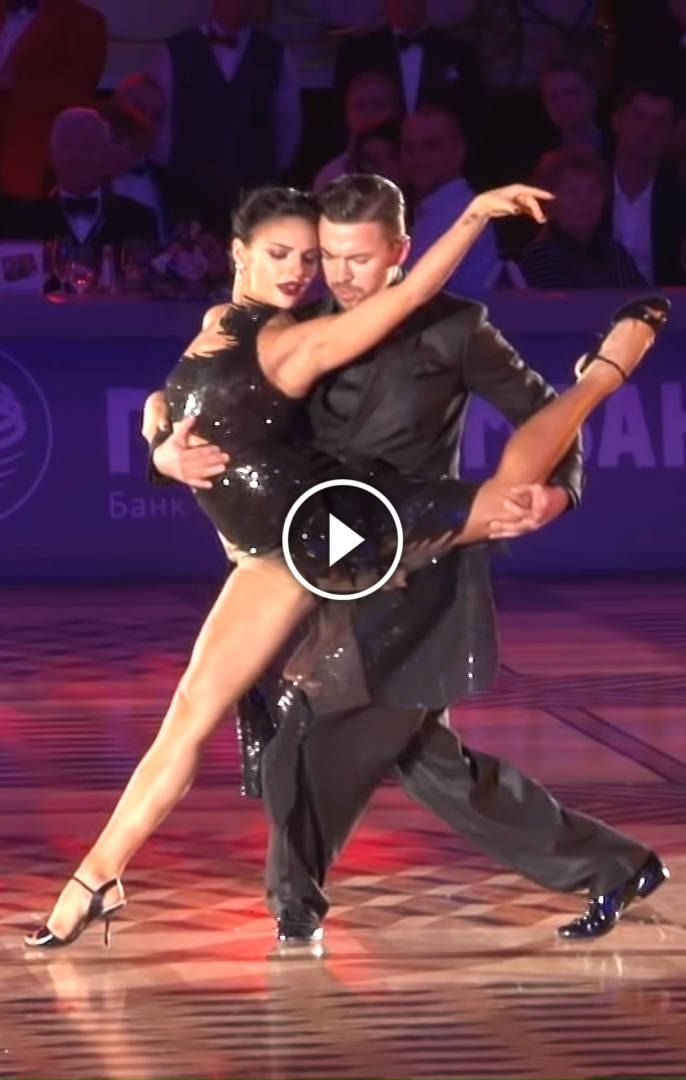
Before we start our dive into Ballroom dancing, though, I would like you to take some time and experience the following breathtaking Tango performance by Dmitry Vasin and Esmer Omerova on the Kremlin Cup. I promise you will love it! After that we will continue with our today’s article and learn about ballroom dance styles and their origins a little more.
Now with everything we’ve seen so far, I believe we are ready to continue, so let’s get right into it…
What is Ballroom Dance?
The main characteristic of ballroom dancing is the partnership between a male and a female. The dances are used for stage performance purposes or enjoyed as entertainment. You can see it being featured in films, parties and competitively on stage. To find ballroom dance classes near you follow the link 😉
Here is a short video from Stanford Viennese Ball of 2017 to give you an idea of what it is:
History
Where does it take its name from?
‘Ball’ is derived from Latin with the root word being ‘ballare’. The word was used by the elite to describe their dancing so that ‘folk dances’ could be left to lower social classes. This explains why it is associated with elite gatherings. Eventually, the boundaries have faded as more communities and individuals adapt styles that differ from conventional ones.
Minuet, Polonaise, Quadrille, Mazurka & Waltz
The definition of ballroom dancing may also be perceived in terms of historical era. Some of the categories that have been featured include Minuet, Polonaise, Quadrille, Mazurka, among others, all of which have a historical significance and attachment to loyalty. The basic formula is that of two individuals with a leader and a follower. Contact is through their upper bodies but they may also stick to hands depending on the dance and prevailing restrictions. The element of partners was borrowed from German waltz and has spread to all parts of the world.
Ballroom Dances vs. Modern Club Dances
Because this type of dance styles are not usually choreographed, it is upon the ‘leader’ to hint to the ‘follower’ the next move. The ‘follower’ responds accordingly making it a continuum. This seemingly organized approach is different from what happens in clubs or other social gatherings where contact seems to be optional and may be taken to extreme levels. Most of these dances come with a little knowledge which is restricted to basic step patterns and rhythms. Continuity depends on cueing. This, however, has been termed as one of the factors that contribute to their decline in popularity. People are not keen on learning the steps. According to dance historians, the emergence of Twist in the 60s heralded the end of partner dancing.
The first mentions in history
There are records of organized ballrooms way back in the 16th Century. Some of the dances mentioned in these records include pavane, basse danse and livelier branie, among others. In fact, Shakespeare referred to the dances as ‘cinq pace’ because they involved five steps. While Minuet had its roots in Paris, France, Waltz took over England in the 19th century. Polka and Mazurka were the other popular genres of the era.
Movement from sequence dancing to a model where couples would move independently led to its popularity. This was the early twentieth century when jazz was also causing another musical breakaway. People also became inventive in their dancing. The world war also took away the old societal norms leading to more inventive dance styles.
Fred Astaire and Ginger Rogers
Astaire and Rodgers are credited with popularizing the organized ballroom dancing in US. Though both actors worked on separate projects and films, their sequences were the most popular and a definition of high-class ballroom dancing. Their dances, which showed castles, among other features, took ballroom dancing to new heights. It must be noted that their dances were choreographed and staged meticulously.
Competitions
Ballroom dances were considered a preserve of the elite for their pastime and to mark social events. Eventually, competitions emerged which were graded in terms of proficiency levels. These competitions have spread to the entire world. This has led to the rise of Dance Sport which has even gained the recognition of the International Olympics Committee. Though ballroom dancing has not been included competitively at the Olympics, the application has not been rejected.
Here is an example of a NYDF professional ballroom competition of 2017:
In the US, the levels of proficiency are determined by US Dance. Syllabus dancers are grouped in Bronze, Silver and Gold while open competitors fall into categories of Novice, Pre-championship and Championship. Each country has a different criterion for grading its dancers.
Judging
Performance in competitions and test events determines the class a group, dancer or couple falls into. Because of diversity based on different musical rhythms, geographical locations, classification bodies, etc, the elements used in judgment vary. They include connection, speed, timing, frame, posture, body alignment, use of body parts like ankles, feet and weight, costume and grooming, among other elements. One can never deny that the judgment is always subjective. It is therefore common to hear complaints and controversies in competitions.
There are standards based on a peculiarity of each dance. They mainly apply in a situation where the genre to be judged independently. Several dance genres may also be ramped together and almost similar rules applied. Children also participate in competitions at their level. In fact, some of the best ballroom dancers in history were identified at childhood. It is part of competitions that enrich the education system.
Common Ballroom Dances
As stated, these dances feature a couple or partners. They are enjoyed both socially and competitively. Here is a list of the most common ones:
- Waltz – It has its origin in Bavaria and Austria and found its way to England in the 17th Century. It is famed for being the first dance where a man was allowed to bring a woman close. The body has to remain at the left. The head of the woman is allowed to extend as the body leaves following the elbow to the right hand. A little rise is experienced where figures have rotation. To make the second step longer, a sway is introduced which also slows the momentum. Viennese has an own waltz as well as Germany, all of which are similar at a basic level.
- Tango – It has its origin in Buenos Aires and is characterized by a combination of open and closed embraces. It is the male who takes the lead as the woman follows. The technique used is fueled by charging music where the dances appear to walk while at the same time trying to keep their feet grounded. Through the steps, their feet and ankles constantly brush. The connection between man and woman is held at the hips while the dancers carry their weight with their toes.
- Samba – Brazil is the hometown for Samba. The rhythm is said to have come from West Africa, brought by the slaves. The dance is created by a bounce resulting from bending and straightening of knees. Other than the strict nature of ballroom dances, it has a sexy appeal and is therefore very popular with the young generation. The dancer may be alone where he moves to quick steps or may have a partner where the two rock to the rapid samba beat and sway in sexy motions. The distinctive steps are voltas, kick change, struts, side steps and bota fogos.
- Cha Cha – The name was originally cha-cha-cha. It derived its name from the sound of bells when they are rubbed. The dance has its roots in Haiti and appears to be a hybrid of Mambo and Rumba. Mambo is a particularly fast dance that proved problematic to some people. In search of a solution, Enrique, a Cuban musician found a way to slow it down. Cha cha is highly flirtatious with numerous hip rotations and synchronized movements by dancers. The Cuban element is captured in the bending of knees and straightening them. The steps to expect with the dance include the fan, hockey stick, chasse, El Mojito, liquidizer and El Paseo, among others.
- Rumba – Rumba ranks among the most passionate, sensual and romantic ballroom dances. It has the reputation of being the front-runner among Latin dances. It is mainly used to tell stories of love and passion. The male lover is the leader and depicts very strong characteristics. The female is coy but very teasing. The name refers to a collection of dances or a party of them. The distinct steps to practice for rumba include La elenita, Fencing line, Hip Rolls, Aida and El Paseo, among others. While the upper body stays relatively stiff, the lower is characterized by exaggerated hip movements.
- Mambo – The dance has its origin in Cuba though the name is borrowed from Haiti. It is characterized by a couple that falls in love. The dancers go through the motions of many dances but the vocals are predominantly Spanish. It has very distinct and fine percussion beats. It can be regarded as salsa that has been slowed down and infused with rumba, foxtrot and waltz.
- Jive – It falls into the category of swing dances. It is only a few decades old, having originated from African American clubs in the 1940s. Jive was carried by American soldiers into England during the world war. While the man is the leader in the dance, the woman seems to be telling him to offer more incentives for her to join in the dance. Some of the moves to learn include the comb, throwaway, American spin, jig walks, arm breaker and chicken walks.
However, there are many other genres a person can explore based on personal preferences and availability of resources. To master any of them and gain prowess especially during competitions we invite you to check out our website to find local classes, competitions, festivals or workshops that may interest you as a dancer.
